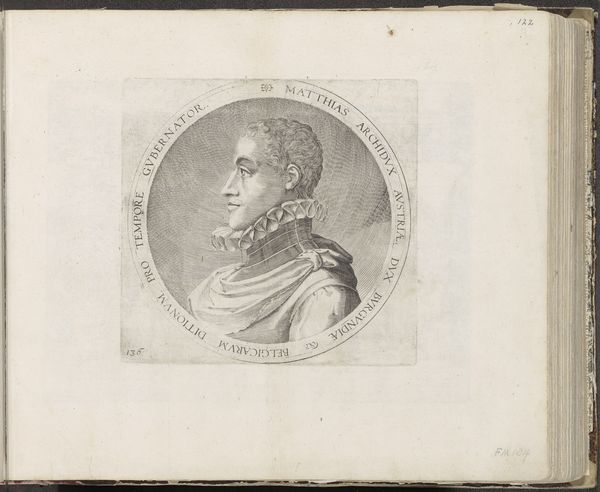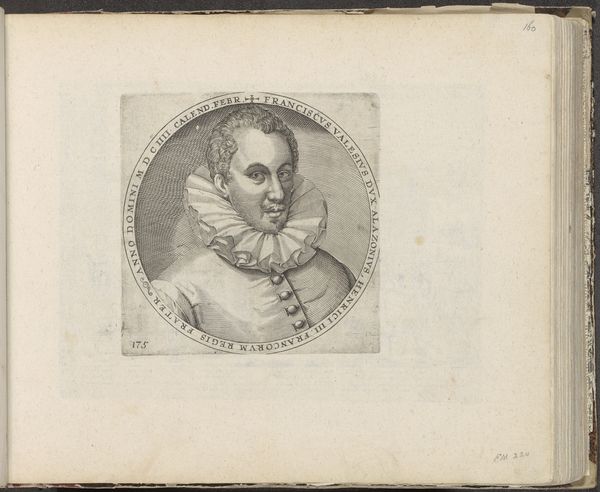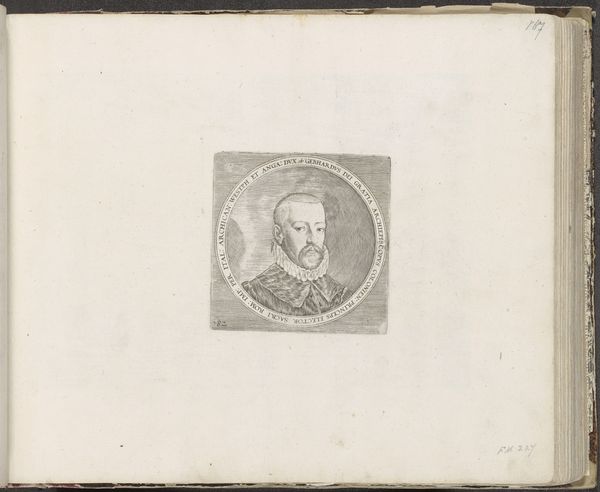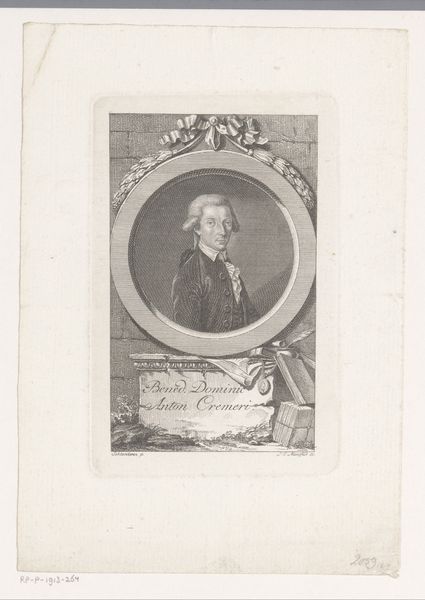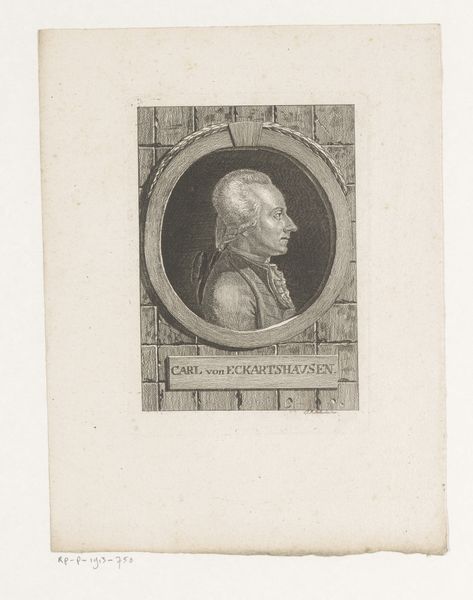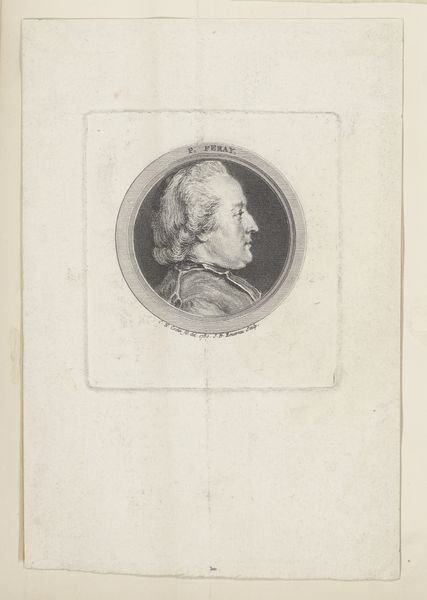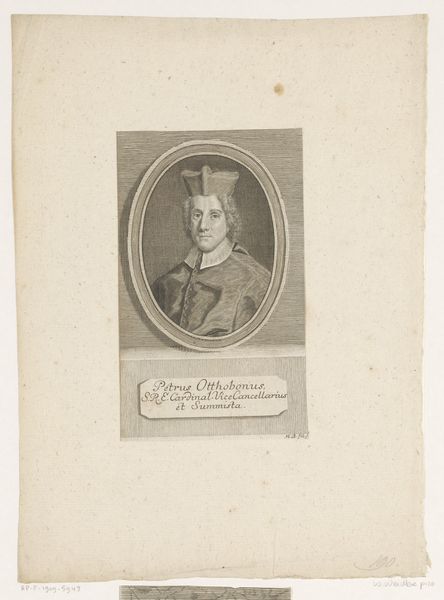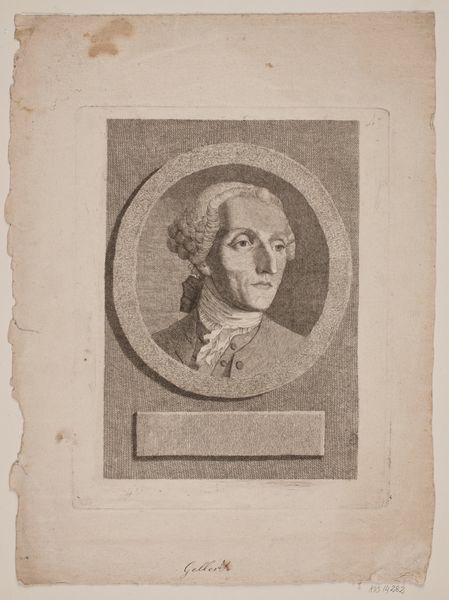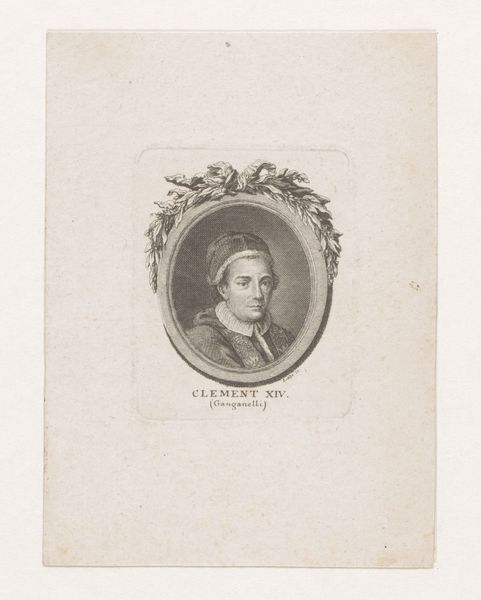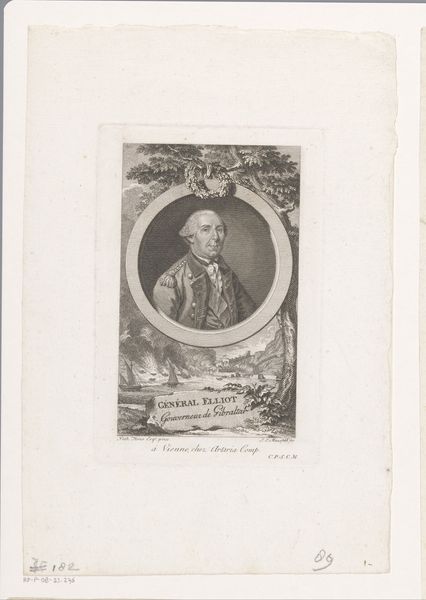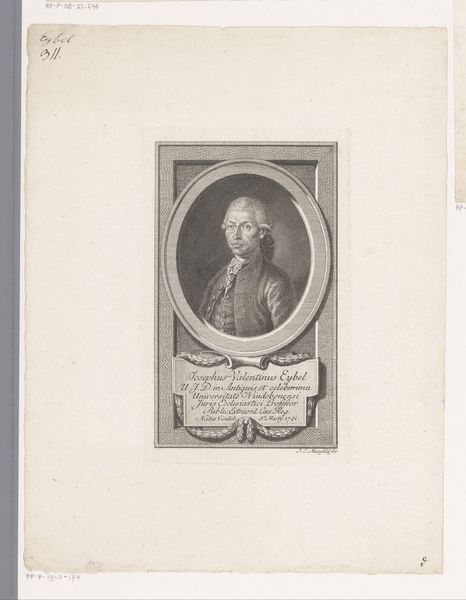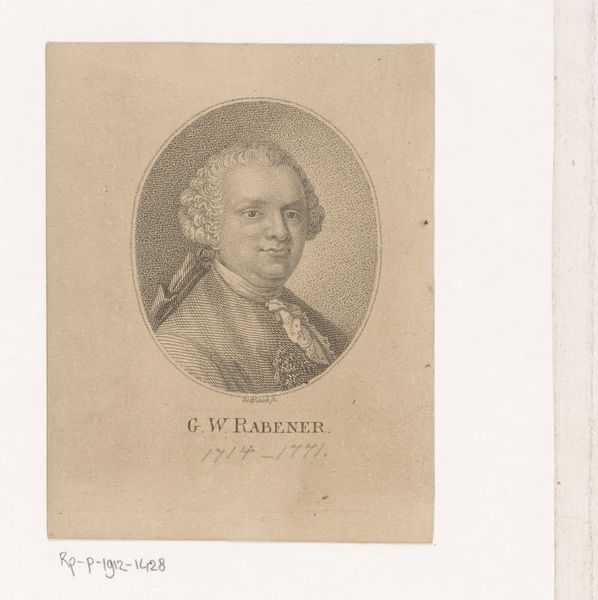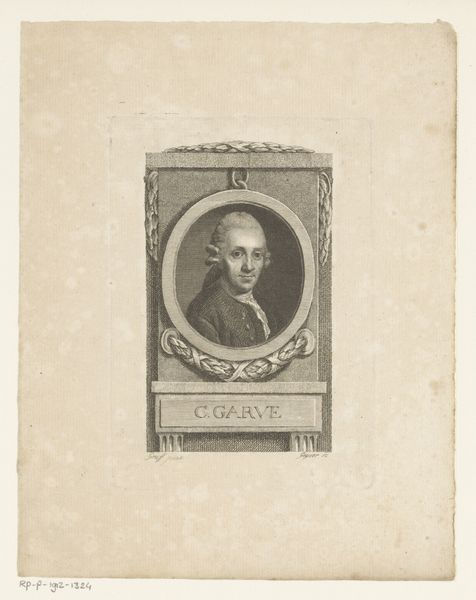
#
aged paper
#
toned paper
#
ink paper printed
#
personal sketchbook
#
coloured pencil
#
ink colored
#
sketchbook drawing
#
watercolour illustration
#
sketchbook art
#
watercolor
Dimensions: height 175 mm, width 175 mm
Copyright: Rijks Museum: Open Domain
This is Frans Hogenberg's "Portret van Maurits" made around 1603 with etching. The circular composition immediately suggests a coin or medallion, designed to project authority. Notice how Hogenberg uses the etched line to create depth and texture. Fine, tight lines define Maurits’ face and the details of his hair and beard, while broader strokes give weight to his armored attire. The inscription which encircles the portrait acts as both a frame and a declaration, embedding the image within a textual context that reinforces Maurits’ identity and status. The precision and detail in this small-scale work show how printmaking was used to disseminate images of power and influence, creating a potent symbol of leadership. Consider how this portrait uses line and form to construct not just a likeness, but a carefully crafted representation of power.
Comments
No comments
Be the first to comment and join the conversation on the ultimate creative platform.
